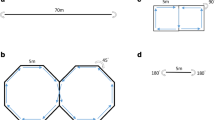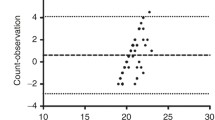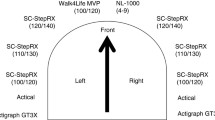Abstract
The pedometer has become a popular instrument to measure physical activity in humans. The pedometer records physical activity as a simple, raw measure of ambulatory movement: the number of steps taken. Two fundamental questions of the use of the pedometer in pediatric research are: How many steps do children take in a day? How many steps should children accumulate on a daily basis? This raises the question: is 13,000 steps the same amount of physical activity in a 6-year-old and a 12-year-old, given the difference in body size and stride length? Although previous authors have concluded that the number of steps taken is an equivalent amount of physical activity in children regardless of body size, the conclusion has not been explained by a scientific rationale or on an empirical basis depending on the energetics and mechanics of terrestrial locomotion and body size. One approach to explain this question is allometric scaling, which has long been utilized by comparative physiologists to show the relationships between body size and locomotion in animals from shrews to elephants. The aim of this paper was to use allometric equations, examples from comparative mammalian physiology, and results from previous papers that have examined the cost of locomotion in children to provide a better understanding of the interpretation of the pedometer in pediatric research. We show that empirically derived results confirm to allometric equations that consider the relationship between body size and terrestrial locomotion to cover a given distance at a given speed. Thus, the number of steps taken and the energy expended for a particular task is greater in smaller children. However, if the cost of locomotion is related to one step, animals tend to be equally economical, whether large or small. Therefore, the number of steps taken as measured by a pedometer may be interpreted as an equivalent level of physical activity between a 6-year-old and a 12-year-old, if taken at the same speed. However, the locomotor activities in daily life consist of walking and running up- and downhill, carrying loads, and at varying speeds or work intensities, and this exemplifies the limitations of the pedometer. In conclusion, this paper provides a better understanding of the interpretation of pedometer counts and highlights that the findings depend on the expression of physical activity.





Similar content being viewed by others
References
Alexander RM (1989) Optimization and gaits in the locomotion of vertebrates. Physiol Rev 69:1199–1227
Alexander RM, Jayes AS, Maloiy GMO, Wathuta EM (1979) Allometry of the limb bones of mammals from shrews to elephants. J Zool (Lond) 189:305–314
Casperson CJ, Nixon PA, DuRant RH (1998) Physical activity epidemiology applied to children and adolescents. Exerc Sci Sports Rev 26:341–403
Cooper DM (1994) Evidence for and mechanisms of exercise modulation of growth: an overview. Med Sci Sports Exerc 26:733–740
De Jaeger D, Willems PA, Heglund NC (2001) The energy cost of walking in children. Pflugers Arch 441:538–543
Eisenmann JC, Malina RM (2000) Body size and endurance performance. In: Shephard RJ, Astrand P-O (eds) Endurance in sport. Blackwell, Oxford, pp 37–51
Eston RG, Rowlands AV, Ingledew DK (1998) Validity of heart rate, pedometry, and accelerometry for predicting the energy cost of children’s activities. J Appl Physiol 84:362–371
Frost G, Bar-Or O, Dowling J, Dyson K (2002) Explaining differences in the metabolic cost and efficiency of treadmill locomotion in children. J Sports Sci 20:451–461
Hatano Y (1993) Use of the pedometer for promoting daily walking exercise. Int Council Health Phys Ed Rec 29:4–8
Heglund NC Taylor CR (1988) Speed, stride frequency, and energy cost per stride: how do they change with body size and gait? J Exp Biol 138:301–318
Hendelman D, Miller K, Baggett C, Debold E, Freedson P (2000) Validity of accelerometry for the assessment of moderate intensity physical activity in the field. Med Sci Sports Exerc 32:S442–S449
Hill AV (1950) The dimensions of animals and their muscular dynamics. Sci Prog 38:209–230
Kohl HW III, Fulton JE, Casperson CJ (2000) Assessment of physical activity among children and adolescents: a review and synthesis. Prev Med 31:S54–S76
Kram R, Taylor CR (1990) Energetics of running: a new perspective. Nature 346:265–267
Lodder MAN, de Haan A, Sargeant AJ (1991) The effect of growth on specific tetanic force in skeletal muscle of the anesthetized rat. J Physiol (Lond) 438:15
McCann DJ, Adams WC (2002) A dimensional paradigm for identifying the size-independent cost of walking. Med Sci Sports Exerc 34:1009–1017
McCann DJ, Adams WC (2003) The size-independent oxygen cost of running. Med Sci Sports Exerc 35:1049–1056
Montoye HJ (2000) Introduction: evaluation of some measurements of physical activity and energy expenditure. Med Sci Sports Exerc 32:S439–S441
Morgan DW, Tseh W, Caputo JL, Keefer DJ, Craig IS, Griffith KB, Akins MB, Griffith GE, Martin PE (2002) Longitudinal profile of oxygen uptake during treadmill walking in able-bodied children: the locomotion energy and growth study. Gait Posture 15:230–235
Nevill AM (1997) The appropriate use of scaling techniques in exercise physiology. Pediatr Exerc Sci 9:295–298
Rowland TW (1996) Developmental exercise physiology. Human Kinetics, Champaign, Ill.
Rowland TW, Auchinachie JA, Keenan TJ, Green GM (1987) Physiologic responses to treadmill running in adult and prepubertal males. Int J Sports Med 8:292–297
Rowland TW, Cunningham L, Martel L, Vandeburgh P, Manos T, Charkoudian N (1997) Gender effects on submaximal energy expenditure in children. Int J Sports Med 18:420–425
Rowlands AV, Eston RG, Ingledew DK (1997) Measurement of physical activity in children with particular reference to the use of heart rate and pedometry. Sports Med 24:258–272
Sargeant AJ (1992) Problems in, and approaches to, the measurement of short term power output in children and adolescents. In: Coudert J, Van Praagh E (eds) Pediatric work physiology. Masson, Paris, pp 11–18
Schepens B, Willems PA, Cavagna GA, Heglund NC (2001) Mechanical power and efficiency in running children. Pflugers Arch 442:107–116
Schepens B, Bastien GJ, Heglund NC, Willems PA (2004) Mechanical work and muscular efficiency in walking children. J Exp Biol 207:587–596
Schmidt-Nielsen K (1984) Scaling: why is animal size so important? Cambridge University Press, Cambridge
Tanner JM (1949) Fallacy of per-weight and per-surface area standards, and their relation to spurious correlation. J Appl Physiol 2:1–15
Taylor CR, Schmidt-Nielson K, Raab JL (1970) Scaling of energetic cost of running to body size in mammals. Am J Physiol 219:1104–1107
Taylor CR, Caldwell SL, Rowntree VJ (1972) Running up and down hills: some consequences of size. Science 178:1096–1097
Taylor CR, Heglund NC, McMahon TA, Looney TR (1980) Energetic cost of generating musclular force during running. J Exp Biol 86:9–18
Trost SG (2001) Objective measurement of physical activity in youth: current issues, future directions. Exerc Sport Sci Rev 29:32–36
Tudor-Locke CE, Myers AM (2001) Methodological considerations for researchers and practitioners using pedometers to measure physical (ambulatory) activity. Res Q Exerc Sport 72:1–12
Tudor-Locke C, Pangrazi RP, Corbin CB, Rutherford WJ, Vincent SD, Raustorp A, Tomson LM, Cuddihy TF (2004) BMI-referenced standards for recommended pedometer-determined steps/day in children. Prev Med 38:857–864
United States Department of Health and Human Services (1996) Physical activity and health: a report of the Surgeon General. National Center for Chronic Disease Prevention, Atlanta
Unnithan VB, Eston RG (1990) Stride frequency and submaximal treadmill running economy in adults and children. Pediatr Exerc Sci 2:149–155
Vincent SD, Pangrazi RP (2002) An examination of the activity patterns of elementary school children. Pediatr Exerc Sci 14:432–441
Vincent SD, Sidman CL (2003) Determining measurement error in digital pedometers. Meas Phys Ed Exerc Sci 7:19–24
Welk GJ, Corbin CB, Dale D (2000) Measurement issues in the assessment of physical activity in children. Res Q Exerc Sport 71:59–73
White FN (1987) Scaling and structure-function relationships. Annu Rev Physiol 49:105–106
Winter EM (1996) Importance and principles of scaling for size differences. In: Bar-Or O (ed) The child and adolescent athlete. Blackwell, Oxford, pp 673–679
Acknowledgements
The authors wish to thank Dr. Greg Welk for insightful discussions of the measurement of physical activity in children and comments on previous versions of the manuscript.
Author information
Authors and Affiliations
Corresponding author
Rights and permissions
About this article
Cite this article
Eisenmann, J.C., Wickel, E.E. Moving on land: an explanation of pedometer counts in children. Eur J Appl Physiol 93, 440–446 (2005). https://doi.org/10.1007/s00421-004-1227-x
Accepted:
Published:
Issue Date:
DOI: https://doi.org/10.1007/s00421-004-1227-x




